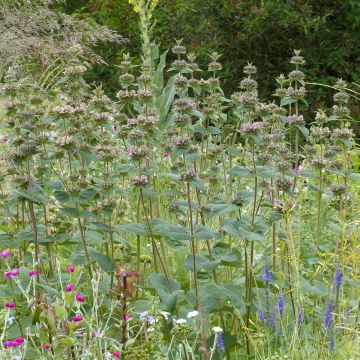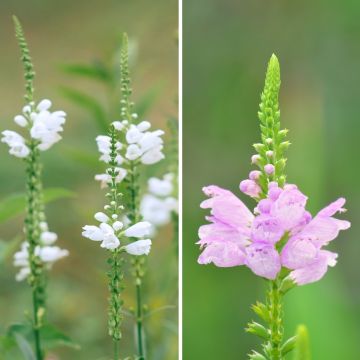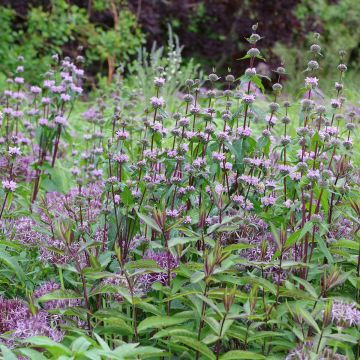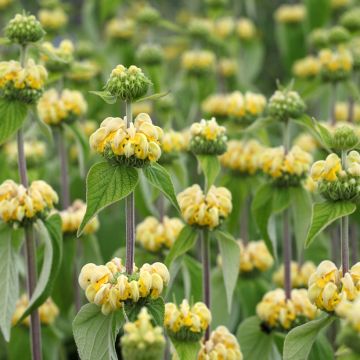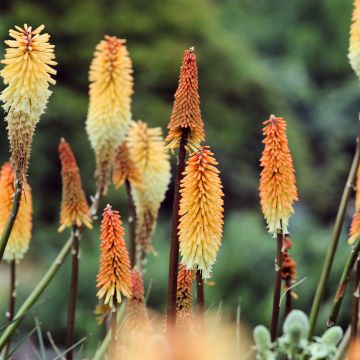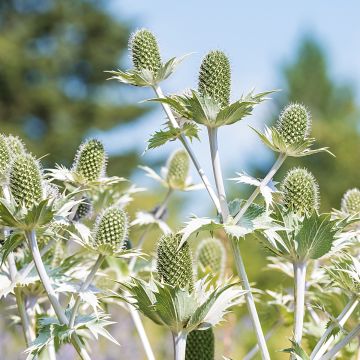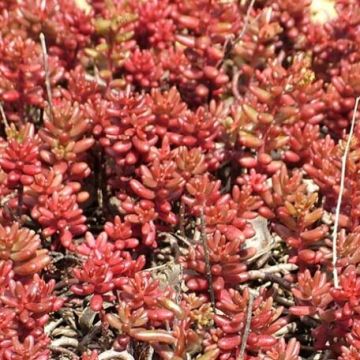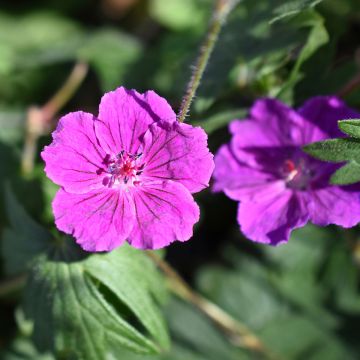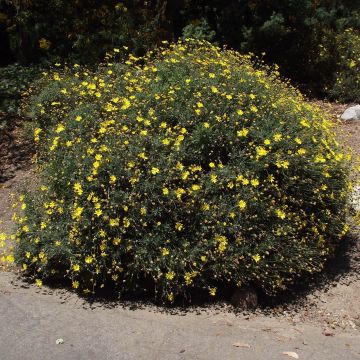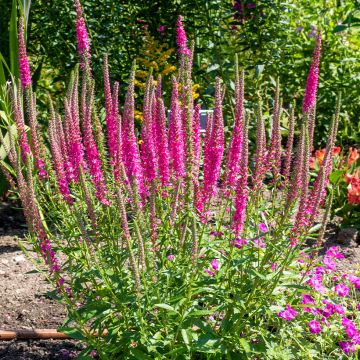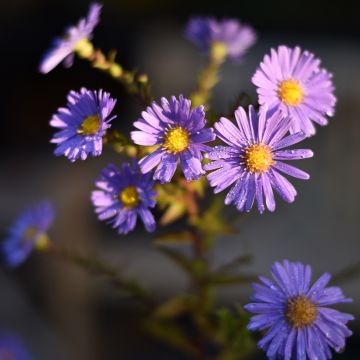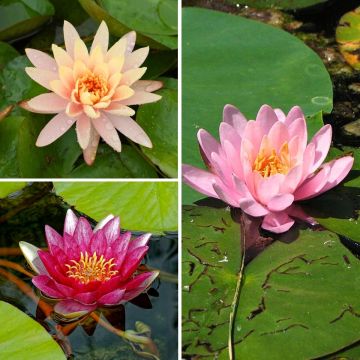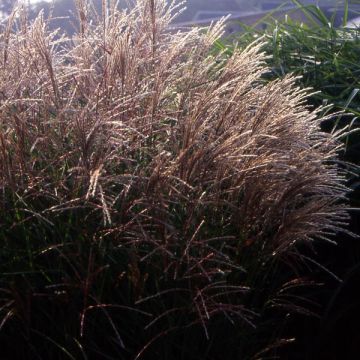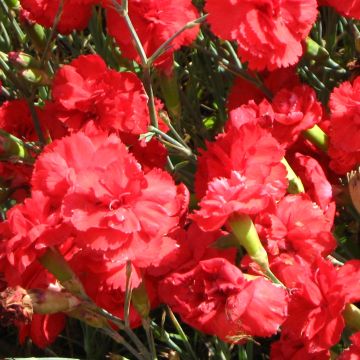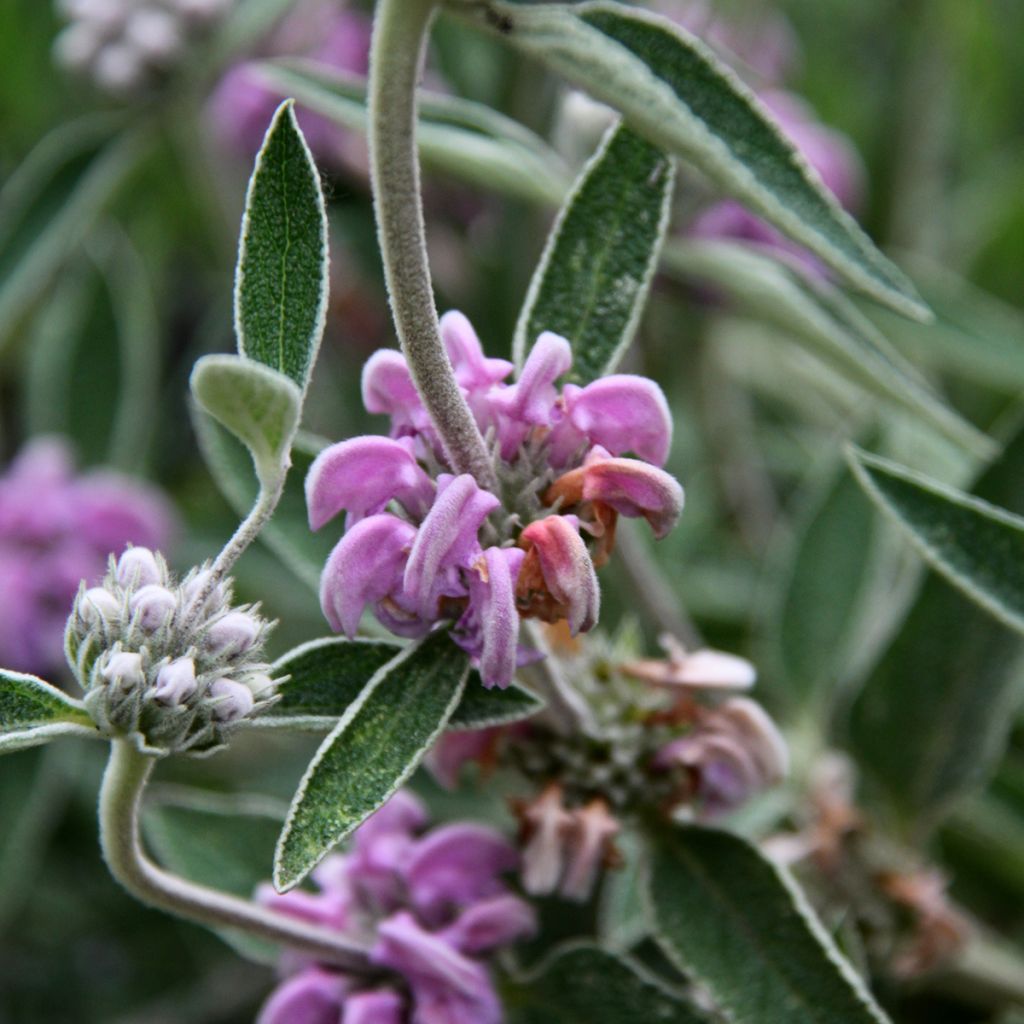

Phlomis purpurea
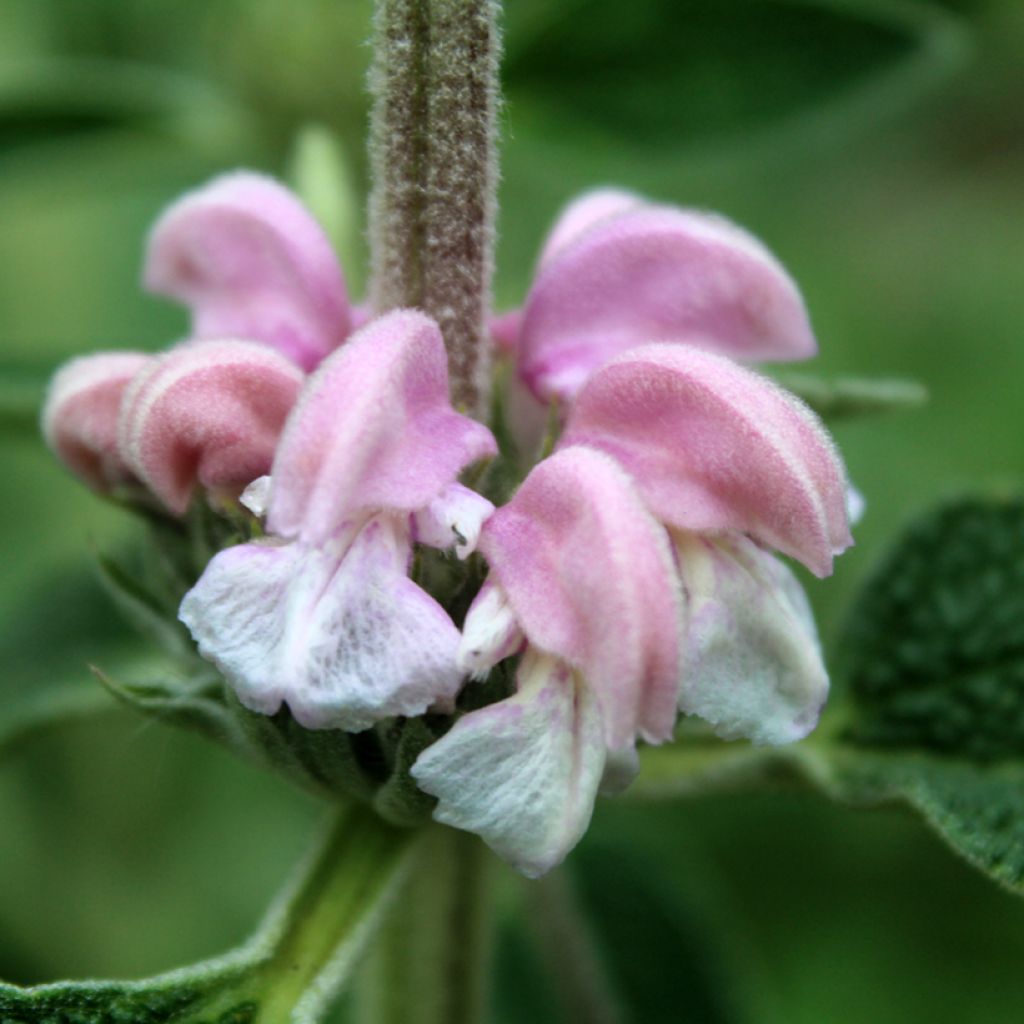

Phlomis purpurea
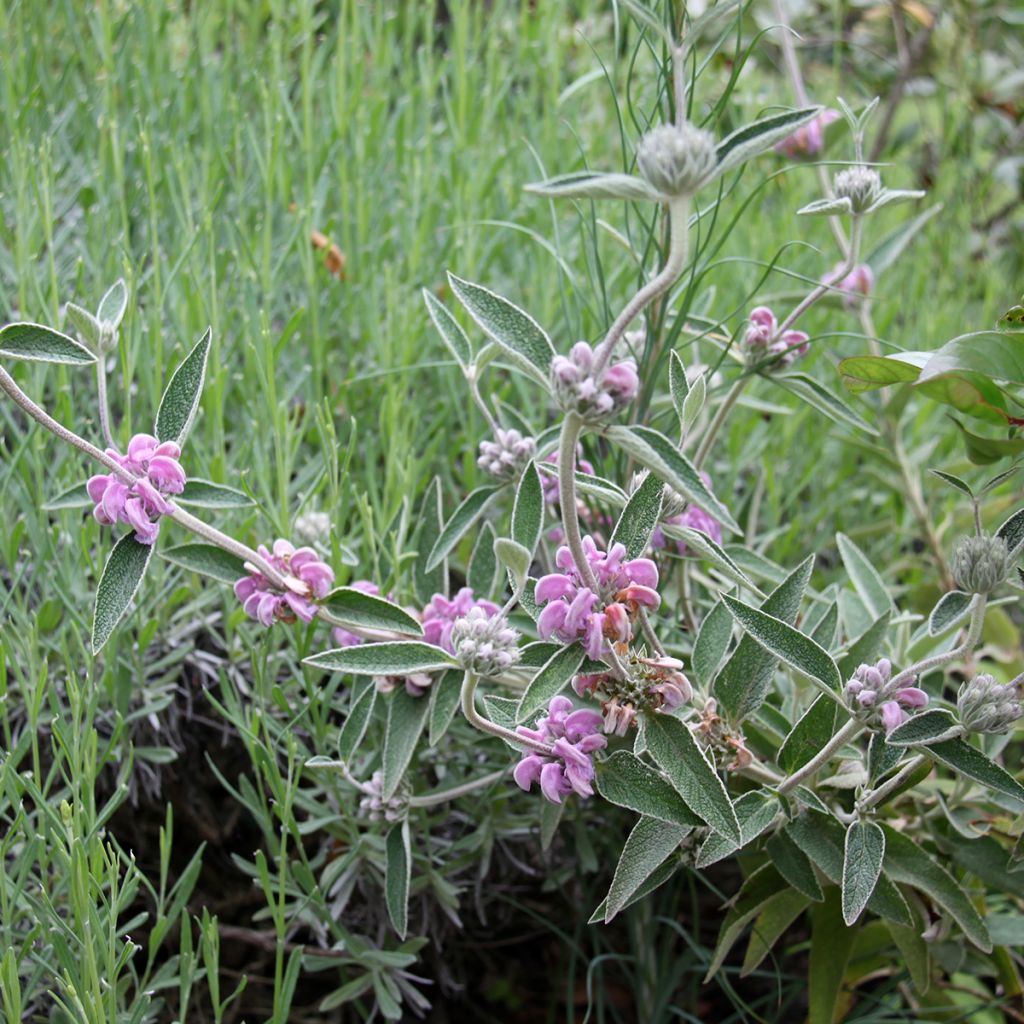

Phlomis purpurea
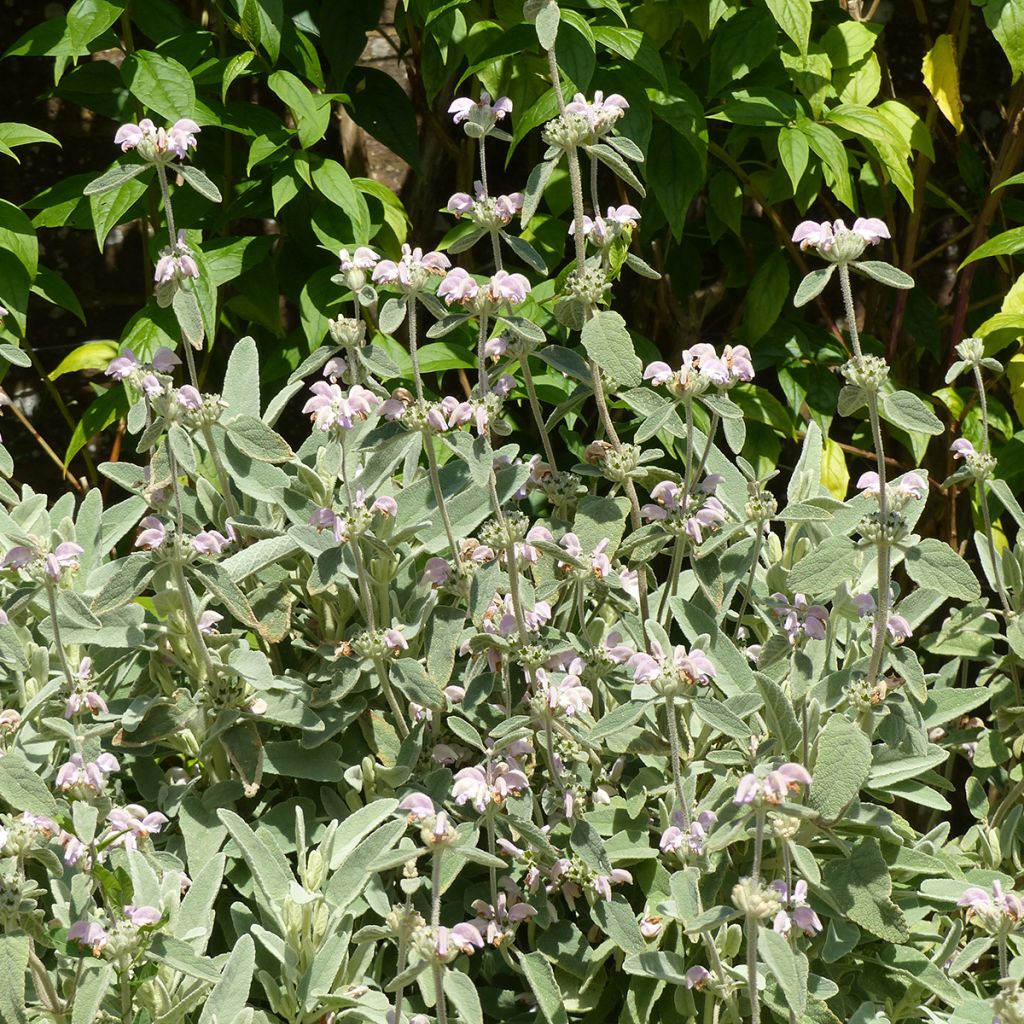

Phlomis purpurea
Phlomis purpurea
Phlomis purpurea
Purple Jerusalem Sage
This item cannot be shipped to the selected country
Delivery charge from €5.90
More information
Schedule delivery date,
and select date in basket
This plant carries a 12 months recovery warranty
More information
We guarantee the quality of our plants for a full growing cycle, and will replace at our expense any plant that fails to recover under normal climatic and planting conditions.
From €5.90 for pickup delivery and €6.90 for home delivery
Express home delivery from €8.90.
Does this plant fit my garden?
Set up your Plantfit profile →
Description
Phlomis purpurea, also known as Jerusalem Sage, is an excellent perennial for dry soil. Its white and woolly stems bear evergreen, grey-green foliage, silvery in summer and decorative all year round. They develop original, very soft mauve-pink flowers in tiered clusters, in late spring. It is easy to grow in full sun in poor, well-drained soil and will establish itself in the garden without requiring much care. Ideal in rock gardens, raised beds, and of course in dry Mediterranean gardens.
Phlomis are plants of the Lamiaceae family, just like lavenders. Phlomis purpurea is a botanical species native to northwest Africa and the southern half of the Iberian Peninsula. Its habitat corresponds to dry, sparse scrubland with limestone soil, found near the Mediterranean coast. This plant grows up to 1000m (3281ft) altitude. It has a cold resistance of -9°C (15.8°F) at the lowest, in well-drained soil.
Phlomis purpurea forms a tuff of leafy stems that will quickly reach 80-90cm (32-35in) high and 60 to 80cm (24 to 32in) wide. Its crown spreads over time thanks to shoots emerging from the roots and the plant eventually forms a ground-covering mass. The flowering period extends from May to June, or even from June to July depending on the climate. Rings of two-lipped flowers appear towards the top of the stems. These flowers are shaped like curved helmets and measure approximately 2 to 3cm (1in). Their colour is a very soft mauve pink, harmonising with the almond-green tint of the foliage. The foliage persists in the winter in Mediterranean areas or in regions where frost is not pronounced. It is very decorative and it consists of narrow, lanceolate, velvety leaves with a greyish-green upper side, a lighter, silvery grey underneath. This foliage will become even lighter in hot and dry conditions.
In the garden, Phlomis purpurea thrives in full sun in very well-drained soil, preferably poor and rocky. In gardens further north, it is essential to find a very sheltered location and plant it in well-drained soil. Phlomis purpurea blends beautifully with other rockery perennials, such as lavenders, rockroses, oregano, or even rosemary. It will naturally fit into a dry Mediterranean garden. It also integrates well into a wild garden or a rock garden.
Report an error about the product description
Flowering
Foliage
Plant habit
Botanical data
Phlomis
purpurea
Lamiaceae
Purple Jerusalem Sage
Mediterranean
Other Phlomis - Hardy Jerusalem sage
Planting and care
Grow Phlomis purpurea in full sun. Plant it in poor and well-drained soil, even limestone, rocky or sandy soil. This phlomis tolerates sea spray and coastal conditions. It withstands summer drought very well but will need regular watering during the first year of planting, especially in dry summers. It is hardy down to approximately -9°C (15.8°F), in a sheltered position and perfectly drained soil. In areas with hot and dry summers, it is best to plant it in early autumn.
Planting period
Intended location
Care
This item has not been reviewed yet - be the first to leave a review about it.
Summer flowering perennials
Haven't found what you were looking for?
Hardiness is the lowest winter temperature a plant can endure without suffering serious damage or even dying. However, hardiness is affected by location (a sheltered area, such as a patio), protection (winter cover) and soil type (hardiness is improved by well-drained soil).

Photo Sharing Terms & Conditions
In order to encourage gardeners to interact and share their experiences, Promesse de fleurs offers various media enabling content to be uploaded onto its Site - in particular via the ‘Photo sharing’ module.
The User agrees to refrain from:
- Posting any content that is illegal, prejudicial, insulting, racist, inciteful to hatred, revisionist, contrary to public decency, that infringes on privacy or on the privacy rights of third parties, in particular the publicity rights of persons and goods, intellectual property rights, or the right to privacy.
- Submitting content on behalf of a third party;
- Impersonate the identity of a third party and/or publish any personal information about a third party;
In general, the User undertakes to refrain from any unethical behaviour.
All Content (in particular text, comments, files, images, photos, videos, creative works, etc.), which may be subject to property or intellectual property rights, image or other private rights, shall remain the property of the User, subject to the limited rights granted by the terms of the licence granted by Promesse de fleurs as stated below. Users are at liberty to publish or not to publish such Content on the Site, notably via the ‘Photo Sharing’ facility, and accept that this Content shall be made public and freely accessible, notably on the Internet.
Users further acknowledge, undertake to have ,and guarantee that they hold all necessary rights and permissions to publish such material on the Site, in particular with regard to the legislation in force pertaining to any privacy, property, intellectual property, image, or contractual rights, or rights of any other nature. By publishing such Content on the Site, Users acknowledge accepting full liability as publishers of the Content within the meaning of the law, and grant Promesse de fleurs, free of charge, an inclusive, worldwide licence for the said Content for the entire duration of its publication, including all reproduction, representation, up/downloading, displaying, performing, transmission, and storage rights.
Users also grant permission for their name to be linked to the Content and accept that this link may not always be made available.
By engaging in posting material, Users consent to their Content becoming automatically accessible on the Internet, in particular on other sites and/or blogs and/or web pages of the Promesse de fleurs site, including in particular social pages and the Promesse de fleurs catalogue.
Users may secure the removal of entrusted content free of charge by issuing a simple request via our contact form.
The flowering period indicated on our website applies to countries and regions located in USDA zone 8 (France, the United Kingdom, Ireland, the Netherlands, etc.)
It will vary according to where you live:
- In zones 9 to 10 (Italy, Spain, Greece, etc.), flowering will occur about 2 to 4 weeks earlier.
- In zones 6 to 7 (Germany, Poland, Slovenia, and lower mountainous regions), flowering will be delayed by 2 to 3 weeks.
- In zone 5 (Central Europe, Scandinavia), blooming will be delayed by 3 to 5 weeks.
In temperate climates, pruning of spring-flowering shrubs (forsythia, spireas, etc.) should be done just after flowering.
Pruning of summer-flowering shrubs (Indian Lilac, Perovskia, etc.) can be done in winter or spring.
In cold regions as well as with frost-sensitive plants, avoid pruning too early when severe frosts may still occur.
The planting period indicated on our website applies to countries and regions located in USDA zone 8 (France, United Kingdom, Ireland, Netherlands).
It will vary according to where you live:
- In Mediterranean zones (Marseille, Madrid, Milan, etc.), autumn and winter are the best planting periods.
- In continental zones (Strasbourg, Munich, Vienna, etc.), delay planting by 2 to 3 weeks in spring and bring it forward by 2 to 4 weeks in autumn.
- In mountainous regions (the Alps, Pyrenees, Carpathians, etc.), it is best to plant in late spring (May-June) or late summer (August-September).
The harvesting period indicated on our website applies to countries and regions in USDA zone 8 (France, England, Ireland, the Netherlands).
In colder areas (Scandinavia, Poland, Austria...) fruit and vegetable harvests are likely to be delayed by 3-4 weeks.
In warmer areas (Italy, Spain, Greece, etc.), harvesting will probably take place earlier, depending on weather conditions.
The sowing periods indicated on our website apply to countries and regions within USDA Zone 8 (France, UK, Ireland, Netherlands).
In colder areas (Scandinavia, Poland, Austria...), delay any outdoor sowing by 3-4 weeks, or sow under glass.
In warmer climes (Italy, Spain, Greece, etc.), bring outdoor sowing forward by a few weeks.

































